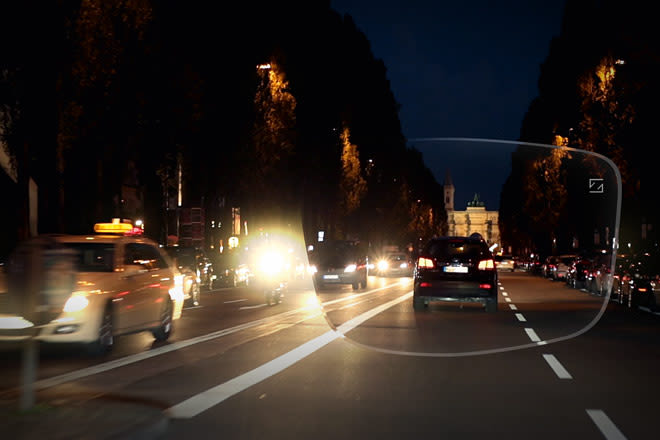What's New In Eyeglass Lenses

Transitions Gen 8 lenses launch with faster fade back
July 2019 — Seeing is believing, they say, and seeing more clearly and faster when moving from indoors to bright sunlight (and from sunshine to inside) is even better.
That's what the new Transitions Signature Gen 8 light-intelligent lenses do. Gen 8 lenses, which debuted in the US in July 2019, activate faster outdoors and the fade back once you're inside is quicker, too.
"Under normal conditions, we're talking about a 35-second activation," says Dr. Ryan Parker, OD, director of professional education at Essilor. Transitions Gen 8 Signature lenses "fade back indoors in less than five minutes."
It took three minutes longer for the previous Transitions generation of lenses to fade back to clear.
Of course, the speed that photochromic lenses adapt to bright or dark light depends on the light itself. If it's cloudy outdoors, instead of full sun, your fade back time when you get inside will be faster. CONTINUE READING: Transitions Gen 8 lenses launch with faster fade back
Lens buying made simpler with the Ultimate Lens Package From Essilor
January 2018 — Considering new glasses but don't know which lenses and lens options to choose? It's a common problem, and one that lens manufacturer Essilor aims to solve with the new Ultimate Lens Package.
It's simple: you buy a pair of lenses, and according to the company, you get three great benefits:
Sharper vision at any distance with Varilux progressive lens design. Or, if you wear single vision lenses, you get Eyezen lenses, which are designed to defend against digital eye strain.
Reduced reflections with Crizal glare-, scratch-, and smudge-resistant lens protection.
Protection from UV rays, filtering of blue light, and reduction in outdoor brightness with Transitions adaptive light performance.
Also, U.S. residents can take advantage of a special offer good through the end of February: Purchase an Ultimate Lens Package, and with the purchase of a second pair of frames you'll get a second pair of qualifying lenses free. The second pair includes a wide range of options, including polarized sun lenses.
Ask your eye care professional for details about the Ultimate Lens Package and this special offer.
Zeiss DriveSafe lenses aim to make driving less scary in low light
November 2015 — Ever wish you could see better when driving on rainy days, at twilight or at night? Many people actually cut back on nighttime driving or avoid it altogether because of oncoming headlight glare and blurriness that makes it hard to see pedestrians and signs.
Zeiss has tackled this issue by releasing a new eyeglass lens in both single vision and progressive versions that's optimized for these conditions. Called DriveSafe, it's actually a high-performance lens that can be worn all day but has a special anti-glare coating that's especially helpful when driving in poor visual conditions.
To develop DriveSafe, the company commissioned a study by the automotive research institute FKFS in Germany to track head and eye movements of drivers. They found a need for a lens with large distance and midrange vision sections, because drivers need to constantly and quickly refocus from the road ahead of them to the dashboard and back again. Also considered in the lens design was the larger pupil size of drivers operating in low light.
And the DuraVision DriveSafe AR coating resulted from consultations with a leading headlight manufacturer to determine the best way to reduce glare from currently produced Xenon and LED headlights.
Ask your eye care professional about availability of DriveSafe lenses in your prescription.
Transitions Optical introduces Signature VII photochromic lenses
March 2014 — Transitions Signature VII features a new dye formulation and molecular technology that allow Signature VII lenses to be more responsive to UV radiation than previous Transitions lenses, according to the company.
So Signature VII lenses get darker in indirect lighting and on hot days, compared with the company's previous-generation (Transitions VI) photochromic lenses. On average, gray Signature VII lenses are 15 percent darker and brown Signature VII lenses are 21 percent darker outdoors than Transitions VI lenses of similar color. And though they get significantly darker outdoors, Signature VII lenses fade back to clear just as fast as Transitions VI lenses, the company says.
Also, the new gray and brown dyes give Transition Signature VII lenses a more aesthetically pleasing appearance; and in user trials, wearers preferred Signature VII lenses 2-to-1 over Transitions VI lenses.
Transitions Signature VII lenses replace Transitions VI lenses as the preferred lens for wearers who prefer optimal indoor clarity and UV responsiveness in a light-sensitive lens in the company's family of photochromic lenses. Other Transitions lenses include:
Transitions XTRActive — Lenses that are darker than Signature VII lenses (both indoors and outdoors) for wearers who are light sensitive and are frequently outdoors.
Transitions Vantage — Lenses that are nearly clear indoors and become polarized as they darken outdoors, for superior glare control in bright, reflective conditions.
Transitions Drivewear — Photochromic sunglasses specifically designed for optimum driving vision in variable daylight conditions.
New lenses protect children's eyes against glare and UV rays
June 2013 — New Crizal Kids UV lenses offer protection against glare and UV light and come standard in the Airwear polycarbonate material. Polycarbonate is one of the safest lens materials for children, because it resists shattering on impact.
The lenses have both front and backside UV protection, and according to the manufacturer, wearers' eyes are 25 times more protected from UV than if they wore no lenses at all.
Benefits include reduction of glare from the sun, as well as glare from fluorescent lights and computer screens, to help prevent eye fatigue and headaches.
Crizal Kids UV lenses come with an unlimited lens replacement warranty for the life of the lens prescription.
SEE RELATED: Eye Tracking Technology
Page published on Wednesday, February 27, 2019







